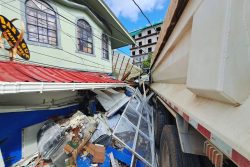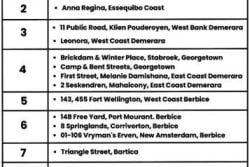Dear Editor,
The Oil and Gas Governance Network (OGGN) notes that ExxonMobil Guyana Limited (EMGL) was happy to announce the arrival of the 100,000 lb capping stack to close off an oil well in the event of an uncontrolled blowout (Payara environmental permit, 24 September 2020) or uncontrolled well event (Yellowtail environmental permit, 30 March 2022). EMGL forgot to mention that the obligatory capping stack arrived 27 months after the permit was signed, just within the permitted 30 months. EMGL still has 9 days for Payara and Yellowtail to get the capping stack into position to control a blown-out well.
In the original Payara EPA permit, signed September 24th, 2020, it mentioned 3 days to get the capping stack into position, see section 8.10 of https://epaguyana.org/wp-content/uploads/2022/11/Environmental-Permit-of-Payara-Development-Project.pdf. However, on June 30th, 2023 the Payara EPA permit was updated to extend the time to 9 days, see section 9.13 https://epaguyana.org/download/payara-development-project-permit-pdf/. Thus, the Guyana EPA updated the Payara EPA permit to allow for an extra 6 days for oil to gush into the Caribbean Sea in the case of an oil spill. It is puzzling why this would be the case without any explanation. In September 2020 we were pumping 100,000 barrels of oil per day but now we pump about 640,000 barrels of oil per day. We are now pumping more than 6 times the amount of oil compared to when the original Payara EPA permit was signed. Given the increased risk, in the amount of oil that could spill per day, it boggles the mind why the Guyana EPA would modify the Payara EPA permit to increase the time to get the capping stack into position by 3 times.
OGGN hopes, Editor, that your journalists have been invited by EMGL and SBM to witness a full-scale practice in moving the capping stack 200 km to the offshore deep-water oil fields and placing the stack accurately on a well. It is not clear which of the various offshore support vessels listed in the MARAD Notices to Mariners, see https://marad.gov.gy/maritime-safety-information/#tab-482221 , are competent and practised in this difficult operation. But there is no point in having the capping stack rusting in a Georgetown Shore Base unless there is an on-call team ready, willing and trained to make it work.
The several environmental (operating) permits issued to EEPGL/EMGL – original, modified, varied and modified, renewed – contain many such instructions from Guyana’s Environmental Protection Agency for monitoring surveys and reports and precautionary drills. In the four-and-a-half years since First Oil from Liza-1, not a single EPA-specified monitoring report has been put into the public domain; not counting the graphs displayed on https://petroleum.gov.gy/data-visualization. Can we be sure that EMGL and SBM Offshore are actually carrying out the practice drills and doing the monitoring to which EMGL country director Alistair Routledge has signed up? Where, for example, is the fish stocks survey? A yellow-painted hunk of metal – the capping stack – is not by itself any assurance of the competence of EMGL or SBM in oil spill control response.
Yours faithfully,
Janette Bulkan
Darsh Khusial
Alfred Bhulai
Joe Persaud
Andre Brandli
On behalf of OGGN
(www.oggn.org/about)





